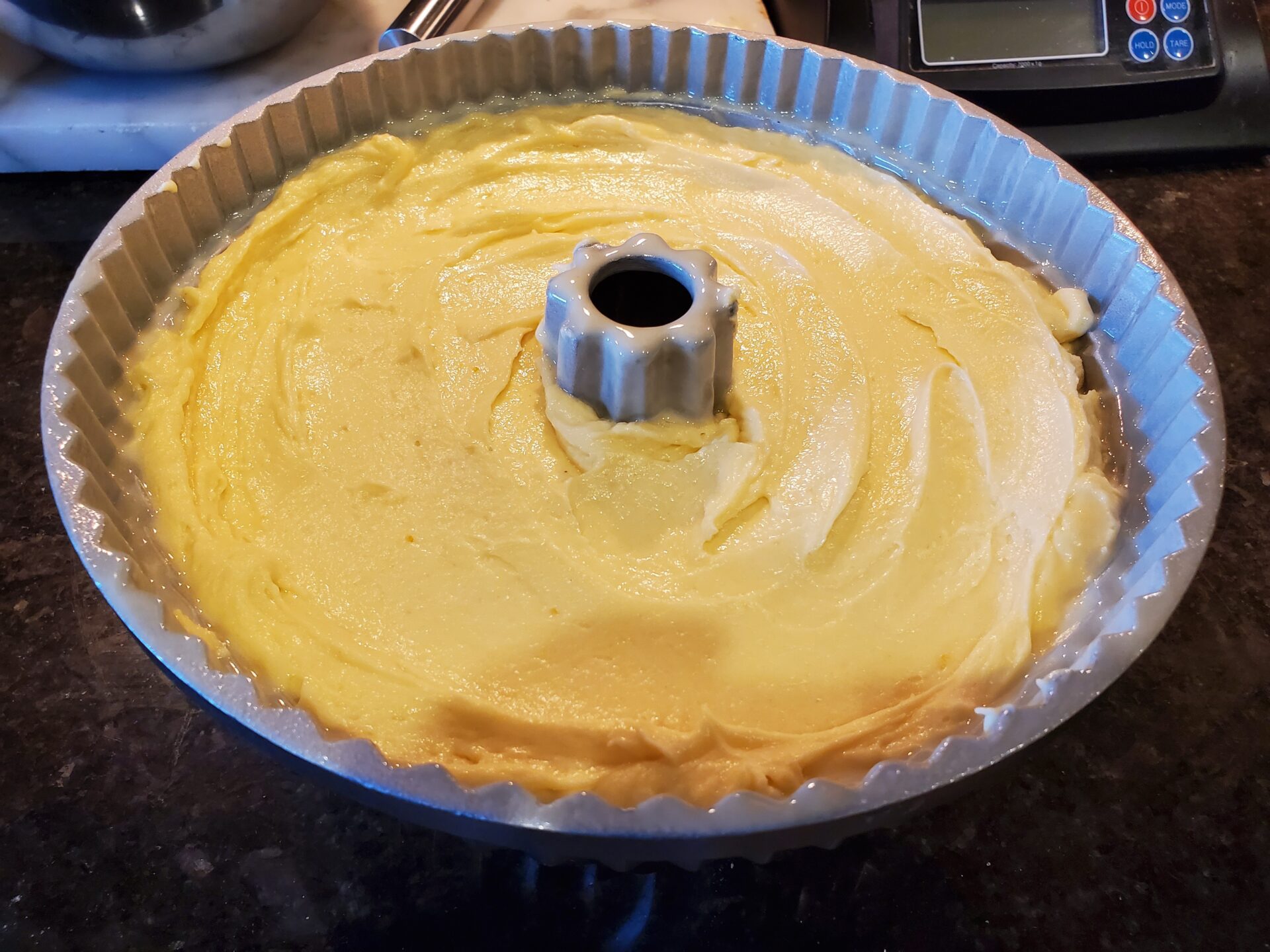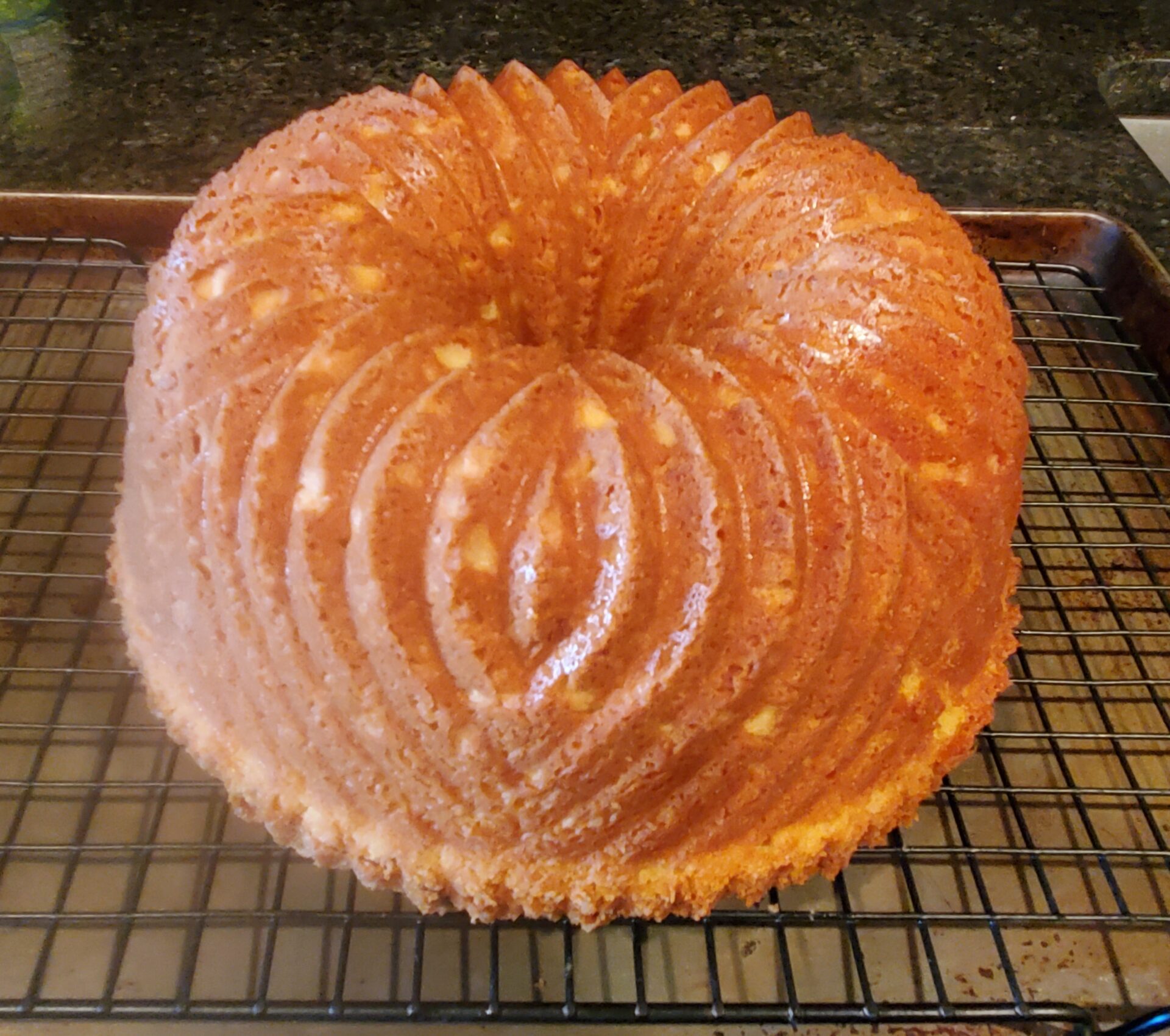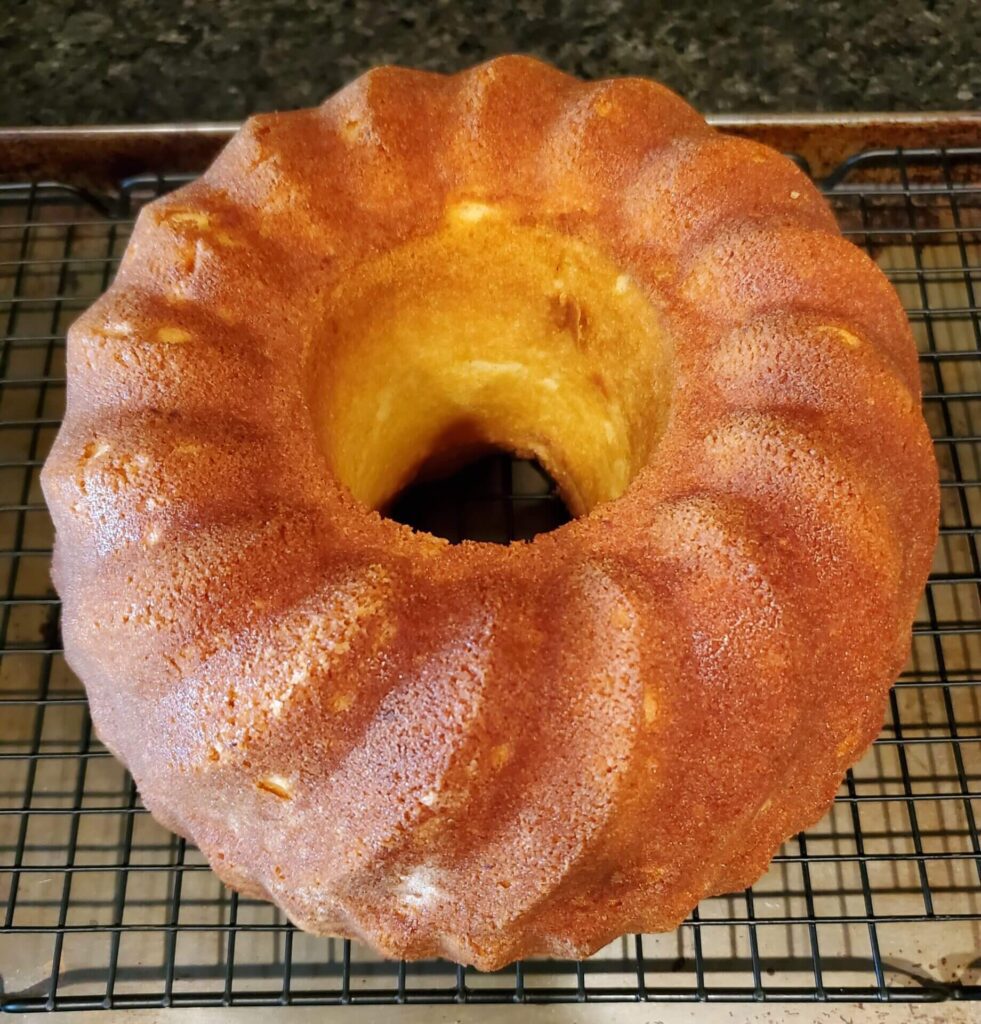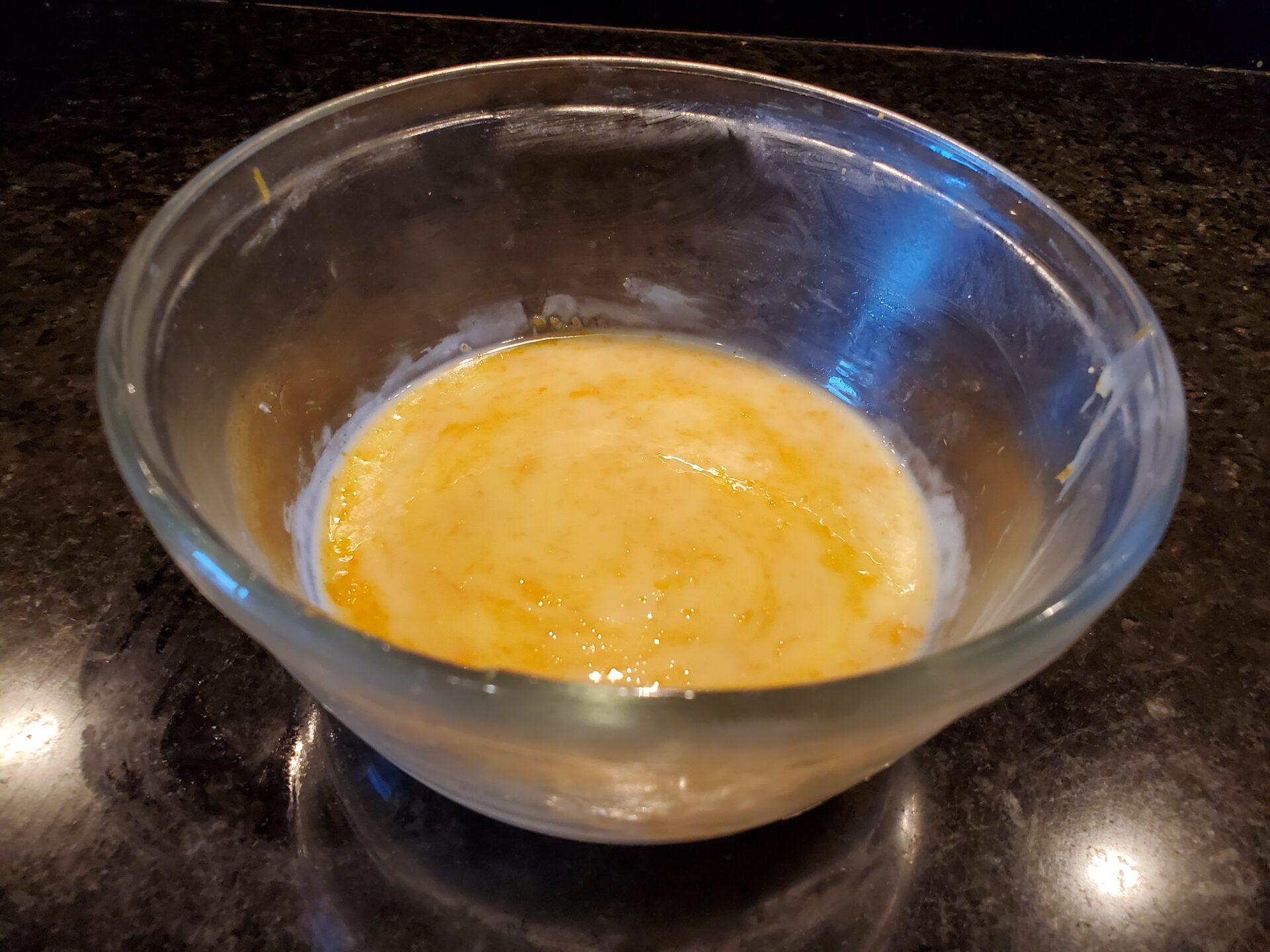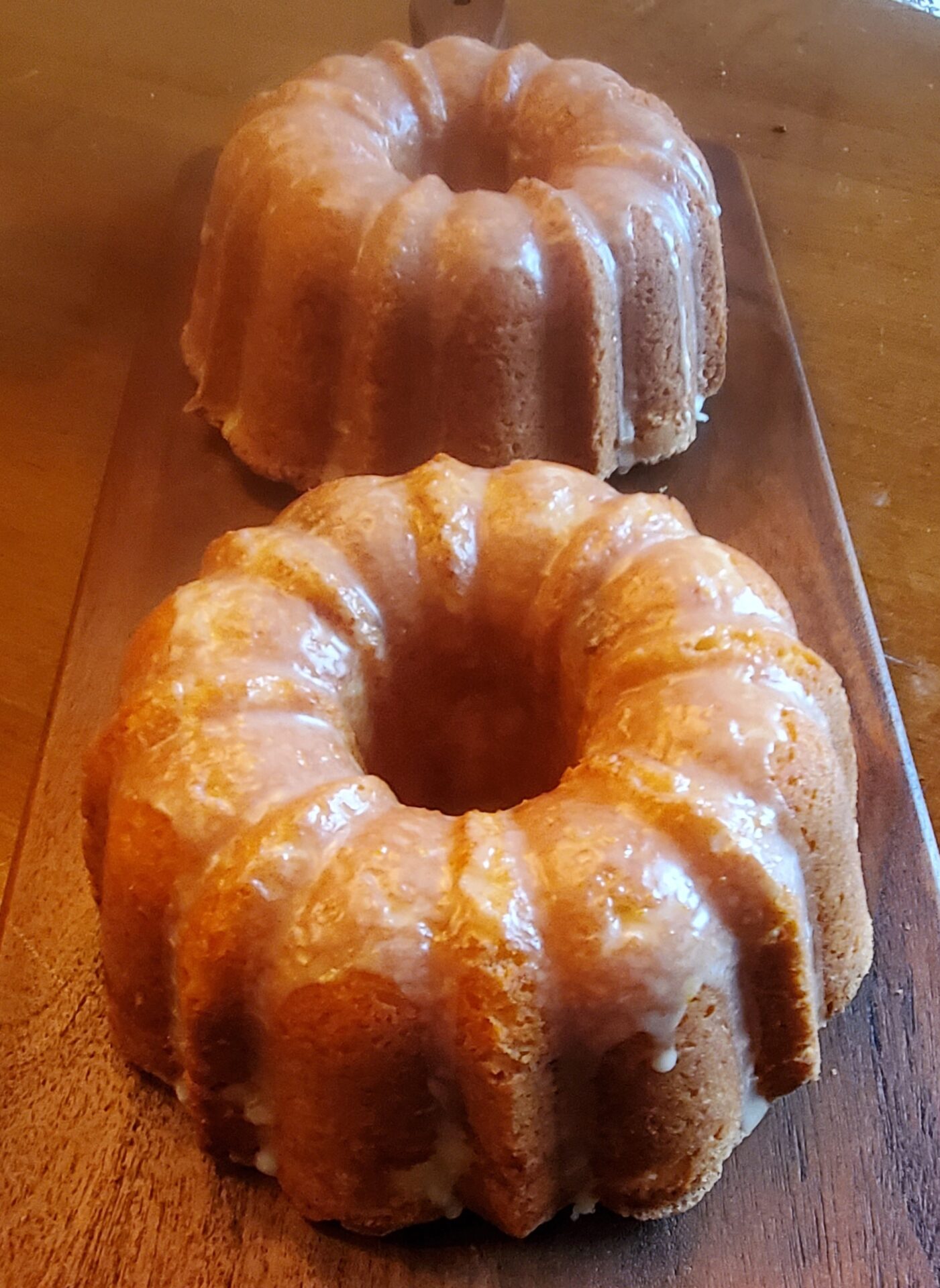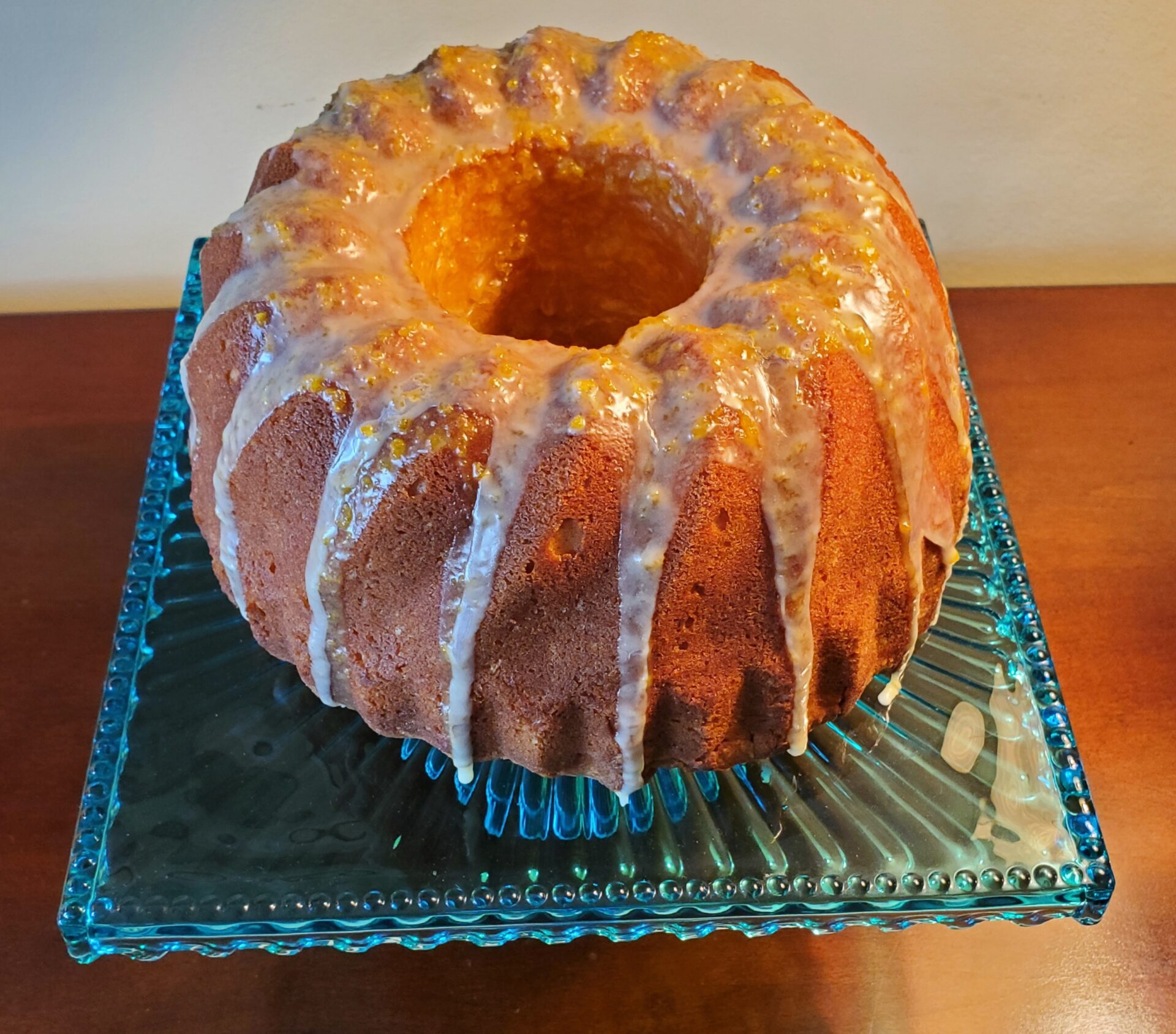Orange Pound Cake
In the early days of The Friday Baking Project, I went to the recipe files looking for a citrus poundcake. I found several but this one, handwritten in batches of one, two and four cakes stood out for two reasons. One, only much-loved recipes were usually that well-documented and second, the basic ingredients were similar to the excellent Marble Pound Cake I had just made.
My intuition was spot on, and it has become one of my favorite pound cakes. It’s moist, tender, with a nice orange flavor in both the cake and the glaze, keeps well at room temperature, and freezes beautifully. I’ve had it in my freezer for weeks, taking a small slice off, then letting it sit on the counter until defrosted or putting it in the microwave for ten seconds. I’m always pleased at how delicious it still is, perfect for a mid-afternoon break from the computer.
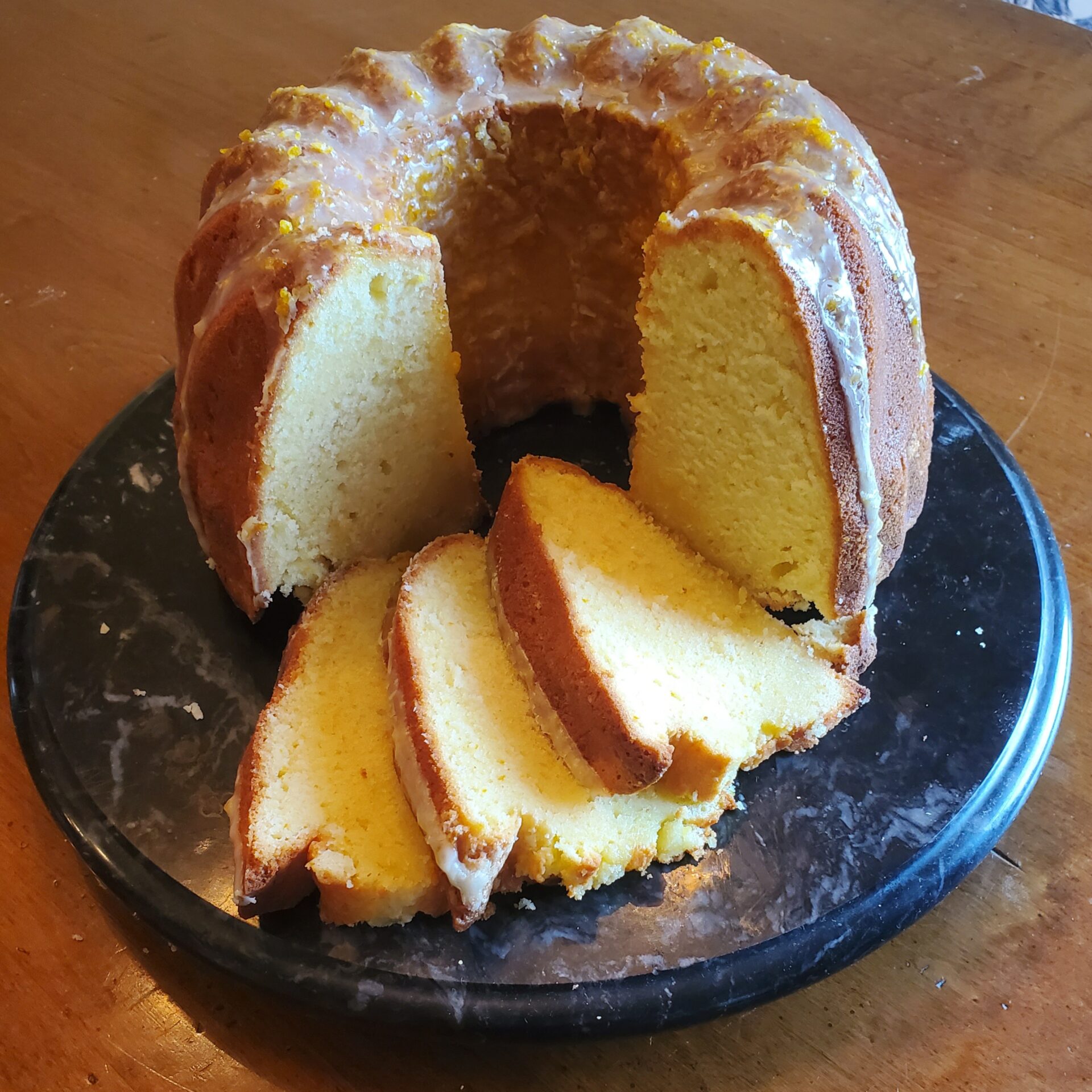
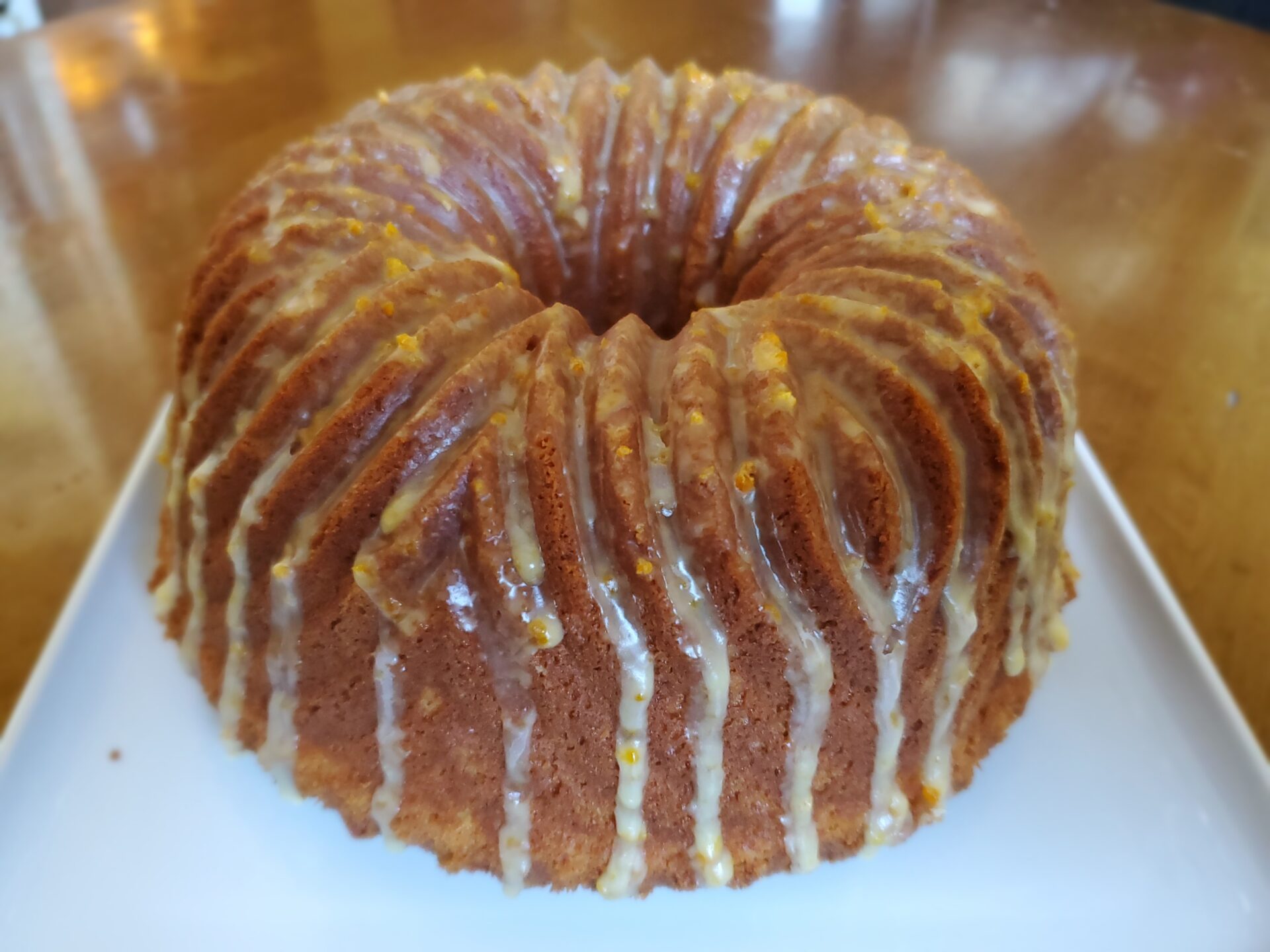
In the height of covid lockdown, Orange Pound Cakes were dropped off at friends’ houses, shipped to one brother in Washington state, and put in the freezer of my other brother’s weekend house in Westchester. It’s been sent to friends and family with health challenges and the lovely thank you notes I received reminds of the power of food to bring joy in even the most challenging times.
I have successfully made this in 10 and 12-cup Bundt pans, a 12-cup Kugelhopf pan, and two 6-cup Bundts which is perfect as you can gift one and keep one.
Recipe credit to my lovely late wife, Nicole, who took the time to meticulously write out the recipe years ago.
Orange Pound Cake
| Yield: 1 cake | # of Servings: 10 | Method: Creaming |
Ingredients
Cake:
1 cup (8 oz / 227 g) unsalted butter, room temperature
2 ½ cup (18 oz / 511 g) sugar
3 cups less 2 tbl (13.5 oz / 383 g) cake flour, sifted
½ tsp (.1 oz / 3 g) salt
¼ tsp (.05 oz / 1.5 g) baking soda
1 cup sour cream, room temperature
1 orange, zested
2 tbl orange juice (from zested orange)
6 eggs, room temperature, well-beaten
1 tsp vanilla extract
Glaze:
1 ½ cup / 6.3 oz / 178 g) confectioners’ sugar, sifted
1 orange, zested
2 tbl orange juice (from zested orange), approximately
Tools and equipment needed:
- One 12-cup bundt or kugelhopf pan, or 2 six-cup bundt pans.
- Hand held or free-standing mixer with paddle attachment.
- Mixing bowl
- Rubber spatula, dry and liquid measuring cups, tablespoon measuring set, juicer.
Pre-recipe preparations:
- Carefully butter and flour the Bundt pan, or use a spray that contains flour, such as Baker’s Joy or Pam for Baking. Do not use regular cooking spray. For Bundt pans, I have become a convert to Baker’s Joy.
- Have all ingredients at room temperature.
- Preheat oven to 350 °F.
Directions
Cake:
- Sift dry ingredients, set aside
- Combine the sour cream, zest, and juice. Set aside.
- Cream butter and sugar until very light and fluffy.
- Add vanilla extract to eggs, mix to combine.
- Slowly add the eggs, in 6 stages, beating well in-between each egg addition.
- Scrape the bottom of the bowl, beat until smooth.
- Add the dry ingredients in three stages, alternately with the sour cream mixture in two stages, beginning and ending with the dry. Use a plastic spatula to scrape up from the bottom to ensure a well-blended batter.
- Pour batter into the prepared bundt pan.
- Bake for between 48 and 55 minutes, when a the top of the when the top feels firm and a cake tester comes out with just a few crumbs. Baking times will vary depending on the size and shape of the pan used. Start testing after 45 minutes.
- Let pan cool on rack for 5 minutes. Then with kitchen towels or pot holder, place the rack over the cake and flip over so cake is released from the pan right-side up.
- Let cool for 10 minutes.
Glaze:
- Add as much of the orange juice as necessary to make a smooth, pourable glaze. Add the orange rind.
- Moving around the cake, pour the glaze over the cake, letting it drip down the sides.
- Let the cake cool completely.
- Cake may be kept, wrapped in plastic, at room temperature. The whole cake, or portions of it, may be frozen.
Baking tips:
- As with all pound cakes, room temperature butter is very important to allow for proper creaming of the butter, sugar, and eggs.
- To facilitate slowly adding the eggs to the batter, beat the eggs in a 2-cup measure.
- This batter tends to stick to cake pan so it is important to butter, or spray the pan well.
- For two 6-cup pans, reduce the baking time slightly, check for doneness after 35 minutes.
- Baking time will vary depending on size, shape, and material of the Bundt pan.
